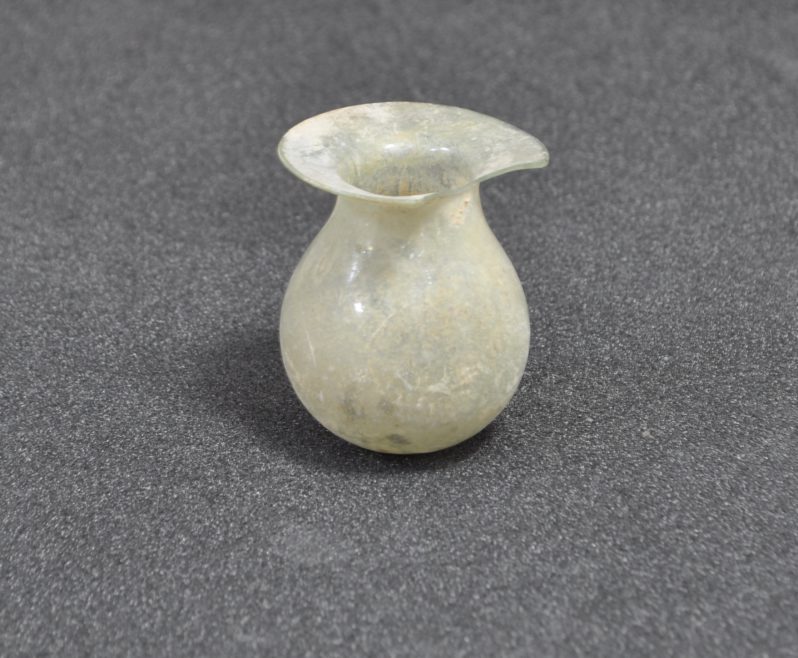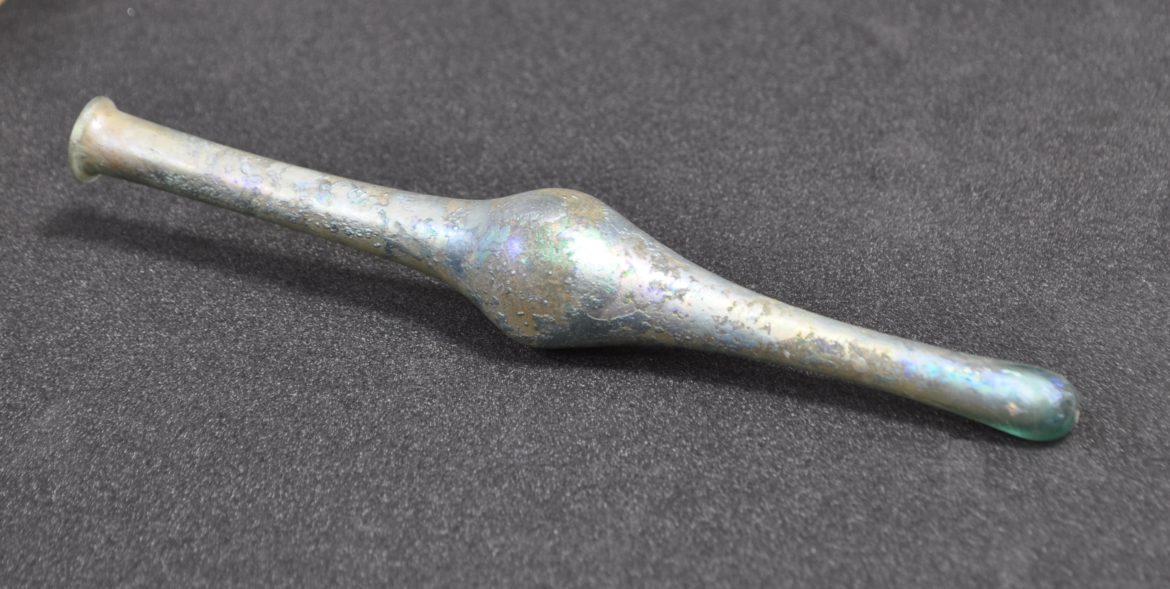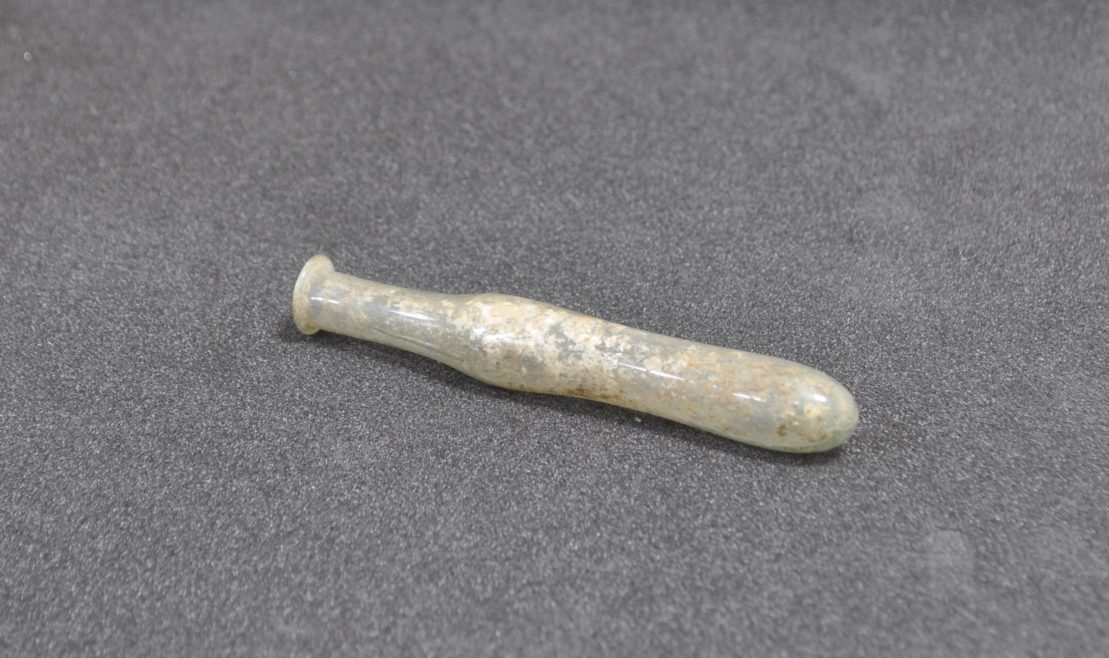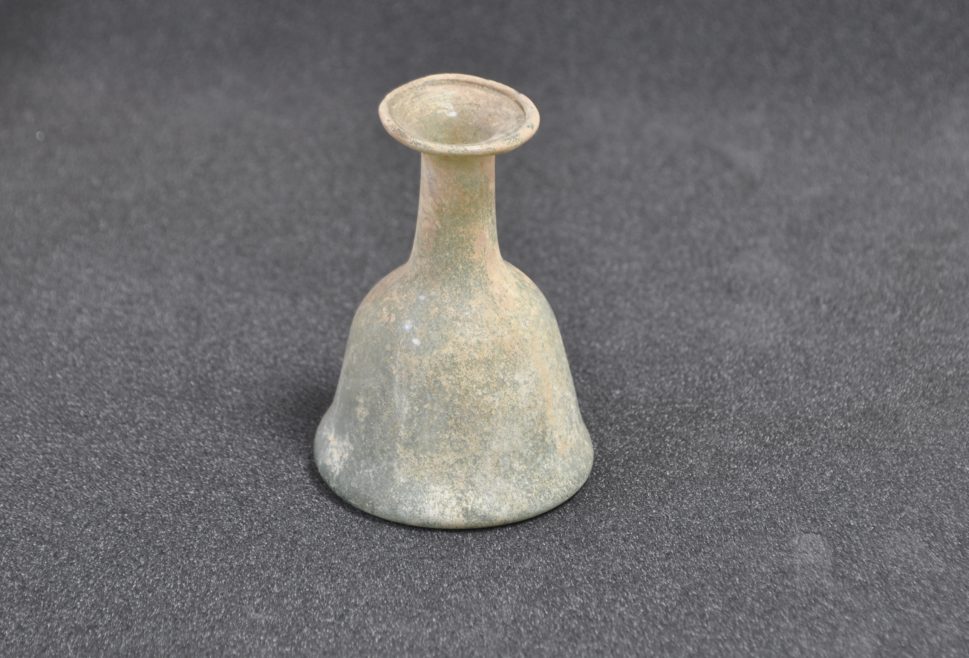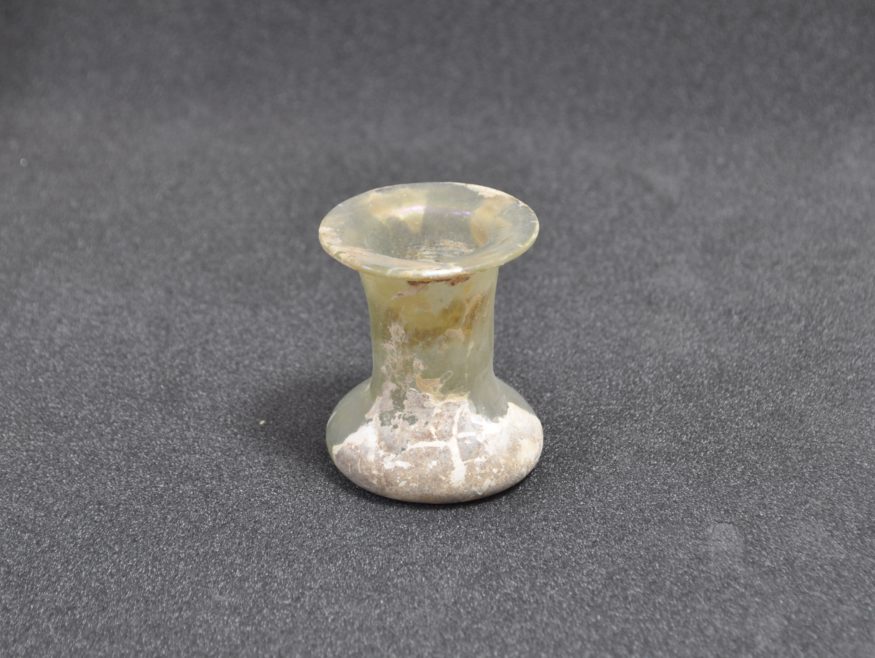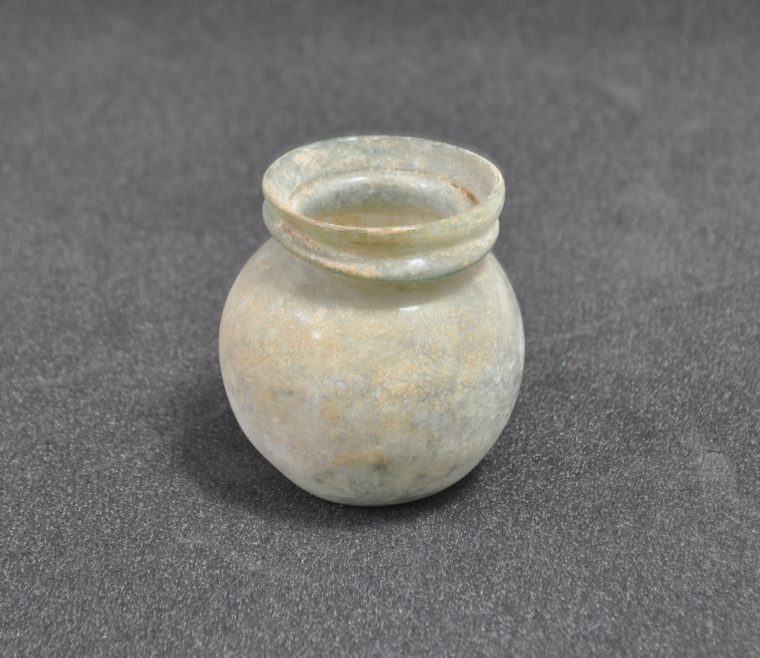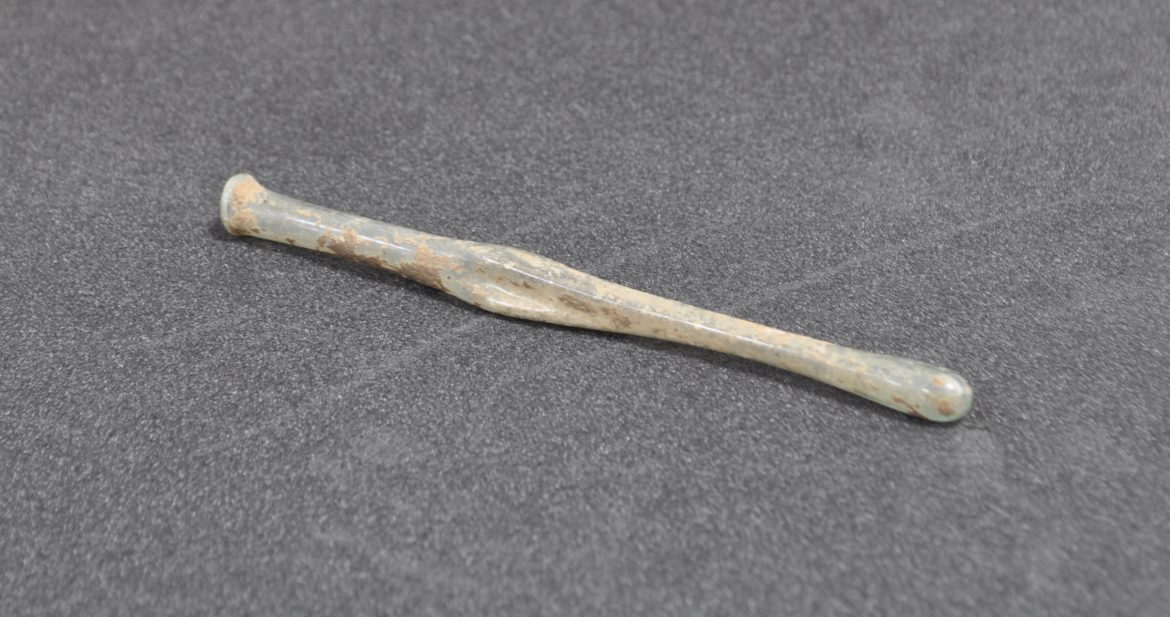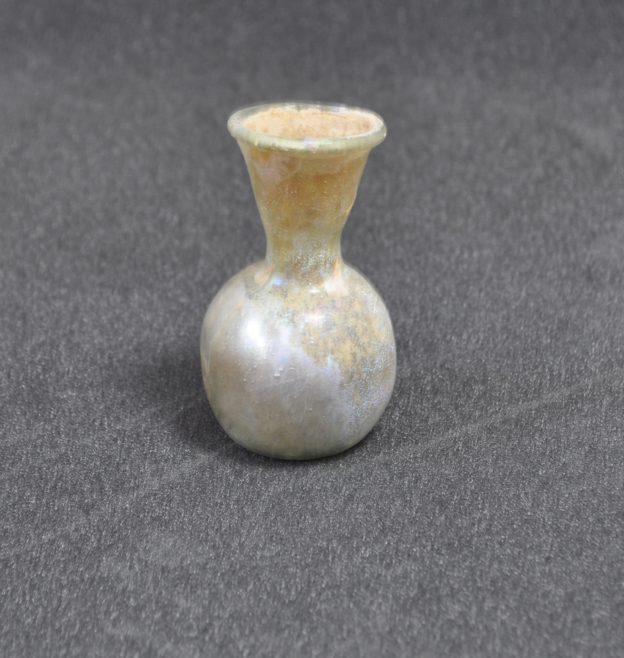About a month ago Abigail Cornick (Curator and Volunteer Co-ordinator at the Museum of the Order of St. John) mentioned to me the presence of a box of Roman glass, kept deep in the collections stores of the museum. I was immediately drawn to the box, perhaps because it was so surrounded in mystery. Other than the label of Roman glass, its origins were highly uncertain, the only record being that some unknown person at some unknown time gifted it to the museum. I approached this box with very low expectations, I was expecting it to be full of shards with at best some incomplete pieces. So you can imagine my astonishment to find nine fantastically-preserved vials. I immediately wanted to know more about these objects.
My education in Archaeology and my love of Sherlock Holmes have taught me the importance of deductive reasoning, which is a lucky thing, because with almost no contextual information at my disposal, this was my only tool. I began with physical examination of the glass objects, noting down what I could see: the striking blue-green colour as I held the objects up to the light, tiny elongated bubbles in the glass, dazzling iridescence and asymmetrical shape in certain pieces. So the question was, what could I learn from this? Well, having no prior in-depth knowledge of Roman glass, I set about using humanity’s most useful tool: Google, to educate myself. With its help, I was able to access various free-to-read academic journal articles and become somewhat literate on the subject of Roman glass.
And so on to my conclusions. First, let me talk about the provenance of the objects. The blue-green colour was especially relevant because it indicated the use of a mineral alkali (natron) flux in the production process. Roman accounts describe this flux as originating from the Wadi Natrun in Egypt. Although the glass itself may have been produced in Egypt, without further chemical analysis, this hypothesis cannot be proven. Due to the widespread nature of glass recycling (with documentary evidence hinting at the trade of broken glass across the empire) it is very possible that these vessels were shaped into their present form in some other location. With more confidence, I am able to say that these objects were probably discovered in a burial rather than settlement context, as they are wholly intact. Although there is weathering in the form of the iridescence visible on some of the pieces, the overall well-preserved state of the glass indicates that these vessels were buried in dry soil, as moisture is a prime cause of weathering. Due to the lack of decoration, it is difficult to typologically classify and compare these pieces, and without contextual evidence, chemical and possibly morphological (shape) analysis there is little else to learn about the geographical origins of these pieces.
In the middle of the 1st century BCE the glass-blowing technique was first used, prior to this core-formed and cast glass were the norm. Glass-blowing was an immediate boon to glass production technology. It was now much quicker and easier to produce glass, and as a result glass could be produced on a mass scale and distributed to the masses. The elongated bubbles that I could see in the glassware in question along with the asymmetrical shape of some of the pieces and the lack of raised moulding lines all point to the use of glass-blowing. Therefore I can say that these products were produced around 50 BCE at the earliest, but in all likelihood sometime later. There is no decoration on the surface of the glass and this suggest that the purpose of these glass products was utility rather than display, as such they are probably lower-status vessels. The blue-green colour of the glass, which is the natural colour of natron glass, shows that there was no effort made to the decolourise or change the colour of the glass through the use of additional fluxes. Again this indicates that the glass vessels in question were lower-status objects. The size of the glassware is also significant, as it indicates that the vessels were used for unguents, perfumes or perhaps for cooking oils. We can see that through study of production it is possible to infer additional information such as the approximate earliest possible date of manufacture, the status level of the objects and their purpose.
So, purely through physical examination and study of the topic of Roman glass I was able to extrapolate a great deal of information ranging from geographical and temporal origins to the status level and the purpose of the objects. Now, this is probably the ideal time to acknowledge that every conclusion that I have come to is based on deductions I have made using incomplete data. Therefore, none of my conclusions can be taken as fact. However as so much of what is hypothesised in Archaeology is based on assumptions, I won’t be losing any sleep over this.
Bibliography
Paynter, S. and Jackson, C.M. (2016) Re-used Roman rubbish: a thousand years of recycling glass. Post-Classical Archaeologies, 6. pp. 31-52.
Keller, D. (2005) Social and economic aspects of glass recycling, J. BRUHN, B. CROXFORD, D. GRIGOROPOULOS (eds), TRAC 2004, Proceedings of the Fourteenth Annual Theoretical Roman Archaeology Conference, Oxford, pp. 65-78



